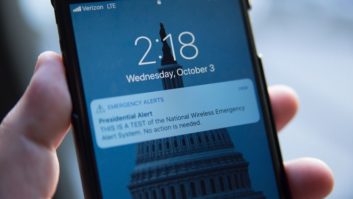When broadcasters want to emphasize their important role during weather or other emergencies, they often point out that cell networks are vulnerable and unreliable during disasters. The FCC agrees and wants to do something about that.
Chairwoman Jessica Rosenworcel has announced an initiative intended to help the public receive Wireless Emergency Alerts when cell towers are disabled during disasters.
“The commission is seeking partners to test the viability of delivering Wireless Emergency Alerts through the use of complementary technologies that can help fill in wireless coverage gaps, such as satellite service,” her office announced, as part of ongoing FCC efforts to strengthen public alerting.
The notice reiterates what radio and TV stations know very well: The loss of cell towers creates “dead spots” in cell coverage, which could deprive people from receiving lifesaving warnings.
It lists numerous instances. Just one example: In Hawaii, the communities of Kapalua, Napili-Honokowai, Kaanapali, Lahaina, Launiupoko and Olowalu are served by 21 cell sites, but on Aug. 12 during the recent wildfires, all 21 were out of service.
[Read more of our coverage of the FCC.]
The commission’s Public Safety and Homeland Security Bureau wants to hear from entities that have “a solution for delivering Wireless Emergency Alerts to mobile devices that are not connected to functioning cell towers.” It expects that this might include satellite technologies; high-altitude platform systems that use balloons or drones; or technologies that enable device-to-device communication.
It wants to partner with as many providers as practical and is prioritizing ideas that don’t involve significant cost to consumers or the need to buy new devices. It wants to begin testing next spring.
Among other things the bureau wants to know if a proposed technology would deliver alerts outside of the intended target area and whether it might cause co- or adjacent-channel interference. It expects that certain satellite technologies or those that use balloons and drones would need to be tested in a remote environment “to reduce the need for coordination and the potential for interference.”









